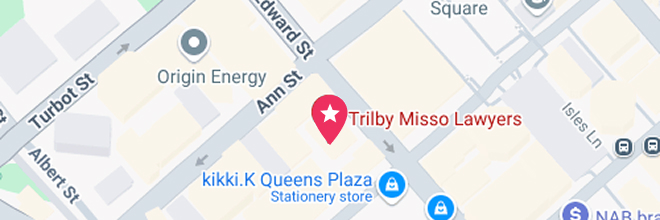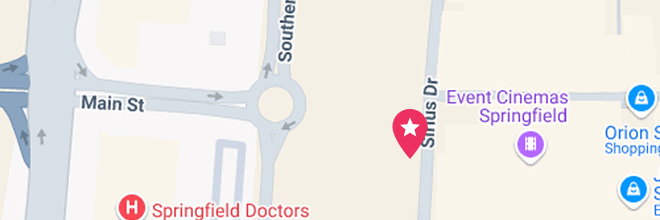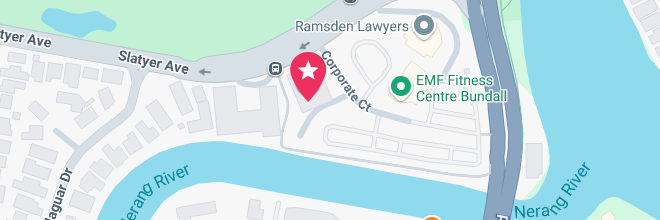Our Brisbane CBD Office
- Suite 400, Level 4/288 Edward St, Brisbane City QLD 4000
- (07) 3910 5470




Filing a personal injury lawsuit can feel overwhelming, especially if you’re dealing with the aftermath of an accident or injury. Whether you’ve been in a motor vehicle accident, suffered a workplace injury, or experienced harm in a public place, knowing your rights and the steps involved in making a claim is crucial. While the legal process may seem daunting, having the right guidance can make all the difference.
At Trilby Misso, we specialise in personal injury claims, helping Queenslanders understand their options and secure the compensation they deserve. In this blog, we’ll walk you through the initial steps of filing a personal injury claim, from gathering the necessary documentation to understanding timelines. We’ll break it down into manageable steps to help you feel more confident and informed.
By the end, you’ll have a clearer understanding of how the process works and what you can expect, whether you’re pursuing a settlement or taking your case to court. Let’s get started.
Understanding Personal Injury Claims: Types and Eligibility.
The Importance of Documentation: Gathering Essential Evidence.
Filing a Claim: Key Steps and Timeline.
What to Expect After Filing: Settlements and Court Proceedings.
Real Case Study: Motor Vehicle Accident Claim..
Personal injury claims arise when someone suffers harm due to another party’s negligence. In Queensland, the most common types of personal injury claims involve motor vehicle accidents, workplace accidents, and public liability incidents. Knowing what kind of claim you’re eligible for is the first step towards seeking compensation.
Motor Vehicle Accidents
Motor vehicle accidents are one of the leading causes of personal injury claims. Whether you were the driver, passenger, pedestrian, or cyclist, if you were injured due to someone else’s negligence, you may be entitled to compensation. Claims can cover medical bills, loss of wages, and rehabilitation costs.
As Dayna Drysdale, Lawyer at Trilby Misso, explains: “If you’ve been injured in a motor vehicle accident, it’s essential to act quickly. Evidence, witness accounts, and proper documentation are key to building a strong case.”
Workplace Accidents
Workplace accidents occur when an employee is injured during the course of their employment. If you’ve been hurt at work, whether due to faulty equipment, unsafe practices, or lack of training, you could be eligible for workers’ compensation. This can include medical costs, time off work, and long-term care if necessary. Employers have a legal responsibility to provide a safe working environment, and claims can arise if they fail in this duty.
Public Liability Claims
Public liability claims typically involve injuries in public places, such as slips, trips, and falls in shopping centers, parks, or other public venues. If you’ve been injured in a public space due to unsafe conditions, you may have grounds to make a claim. Compensation may cover your medical treatment, lost earnings, and any pain and suffering caused.
When it comes to filing a personal injury claim, documentation is everything. The strength of your claim largely depends on the evidence you gather, as this will help establish the extent of your injuries and prove the negligence of the responsible party. Collecting the right documentation early on can make the difference between a successful claim and a delayed process.
Medical Records
One of the most crucial pieces of evidence in a personal injury claim is your medical records. These documents show the nature and severity of your injuries, treatment plans, and any ongoing medical care you may require. From your initial diagnosis to follow-up appointments, make sure everything is well-documented and easily accessible.
Accident Reports and Photographs
For claims arising from motor vehicle accidents, workplace injuries, or public liability incidents, an official accident report can serve as key evidence. This may include police reports, incident reports from employers, or safety inspection records. Additionally, photographs of the accident scene, any visible injuries, or damaged property provide compelling visual proof that can strengthen your claim.
As Dayna Drysdale, Lawyer at Trilby Misso, notes: “Clear and comprehensive documentation is the backbone of any personal injury claim. Taking photos, keeping records of medical visits, and gathering witness details can all help to substantiate your case.”
Witness Statements
If anyone witnessed the accident or incident that caused your injury, their statements can be incredibly valuable. Witnesses can provide an objective account of what happened, backing up your version of events. Be sure to gather contact details and written or recorded statements as soon as possible, as memories may fade over time.
Receipts and Financial Records
In addition to proving the cause of your injury, you will need to demonstrate the financial impact. Keep copies of all related expenses, including medical bills, rehabilitation costs, and any other out-of-pocket expenses. If your injury has affected your ability to work, documentation showing lost income is essential.
Filing a personal injury claim can seem daunting, but understanding the key steps involved can help make the process smoother. Acting within the required timeframes and following the correct procedures are crucial to the success of your claim. Let’s break down the steps and the timeline for filing a claim in Queensland.
Once you’ve filed a personal injury claim, the next stage involves negotiation and, potentially, court proceedings. Understanding what happens after lodging your claim can help ease any uncertainty and prepare you for the process ahead.
Settlements
Most personal injury claims are resolved through settlements, meaning both parties agree on compensation without going to court. Once the insurer reviews your claim and investigates the incident, they may make a settlement offer. This offer is intended to cover your medical expenses, lost wages, and any pain and suffering resulting from the injury.
It’s important not to rush into accepting the first offer, as it might not fully account for your future needs, such as ongoing medical treatment or rehabilitation. At this point, having legal representation can be incredibly valuable.
As Dayna Drysdale, Lawyer at Trilby Misso, advises: “Settlements should reflect the full impact of the injury on your life. It’s essential to carefully evaluate any offer to ensure it covers both current and future losses.”
Negotiation Process
If the initial settlement offer is unsatisfactory, your lawyer will engage in negotiations with the insurer to secure a fairer outcome. This back-and-forth process can take some time, but it’s an essential step to ensure your needs are met. Most cases are settled during this phase, avoiding the need for a court trial.
Court Proceedings
In situations where an agreement can’t be reached, your claim may proceed to court. While going to trial might sound intimidating, it’s relatively rare, as both parties typically prefer to avoid the costs and time involved. If your case does go to court, the judge will evaluate the evidence presented by both sides and make a decision regarding compensation.
During this stage, you will need to provide detailed evidence, including medical reports, witness testimony, and other supporting documents. Your lawyer will represent you and guide you through the process to ensure the best possible outcome.
Timeframes
The timeframe for settlements or court proceedings can vary widely. Some claims are resolved within months, while more complex cases may take years. Regardless, having a clear understanding of each step and what to expect will help you navigate the process with confidence.
Joseph couldn’t believe his bad luck, being involved in two motor vehicle accidents in a four-month period.
The team at Trilby Misso had experience with clients being involved in multiple accidents, so they knew what had to be done. The team protected Joseph’s rights with the two insurers. As expected, each insurer blamed the other for the injuries and associated losses but the legal team had the necessary experience to take strategic steps to manage the insurers and get the best outcome for Joseph.
The legal team collected evidence from Joseph, his employer, his earning records and medical evidence. This all helped establish what damage had been caused in each accident and formed the legal arguments made by the team.
The team were successful in securing two settlements for Joseph totaling $62,500. What looked to be a tricky situation was successfully handled by the experienced team at Trilby Misso.
Kathryn is Trilby Misso’s Chief Executive Officer.
Meet KathrynUse this simple online tool and find out if you have a claim in less than thirty seconds. You can choose to remain anonymous.
Your next step is a small one. All you need to do is give us a call on 07 3910 5470 or complete this form here to arrange a quick chat.
During this initial conversation, we will:

We understand that taking legal action can be stressful, and we’ll do all we can to ease your concerns.
The chat can take place at our place, your place, or by phone. There is no cost, no pressure, and no obligation.
Call 07 3910 5470 or fill out this form, and we’ll get back to you within 2 hours (during business hours). We look forward to meeting you.
enquire now